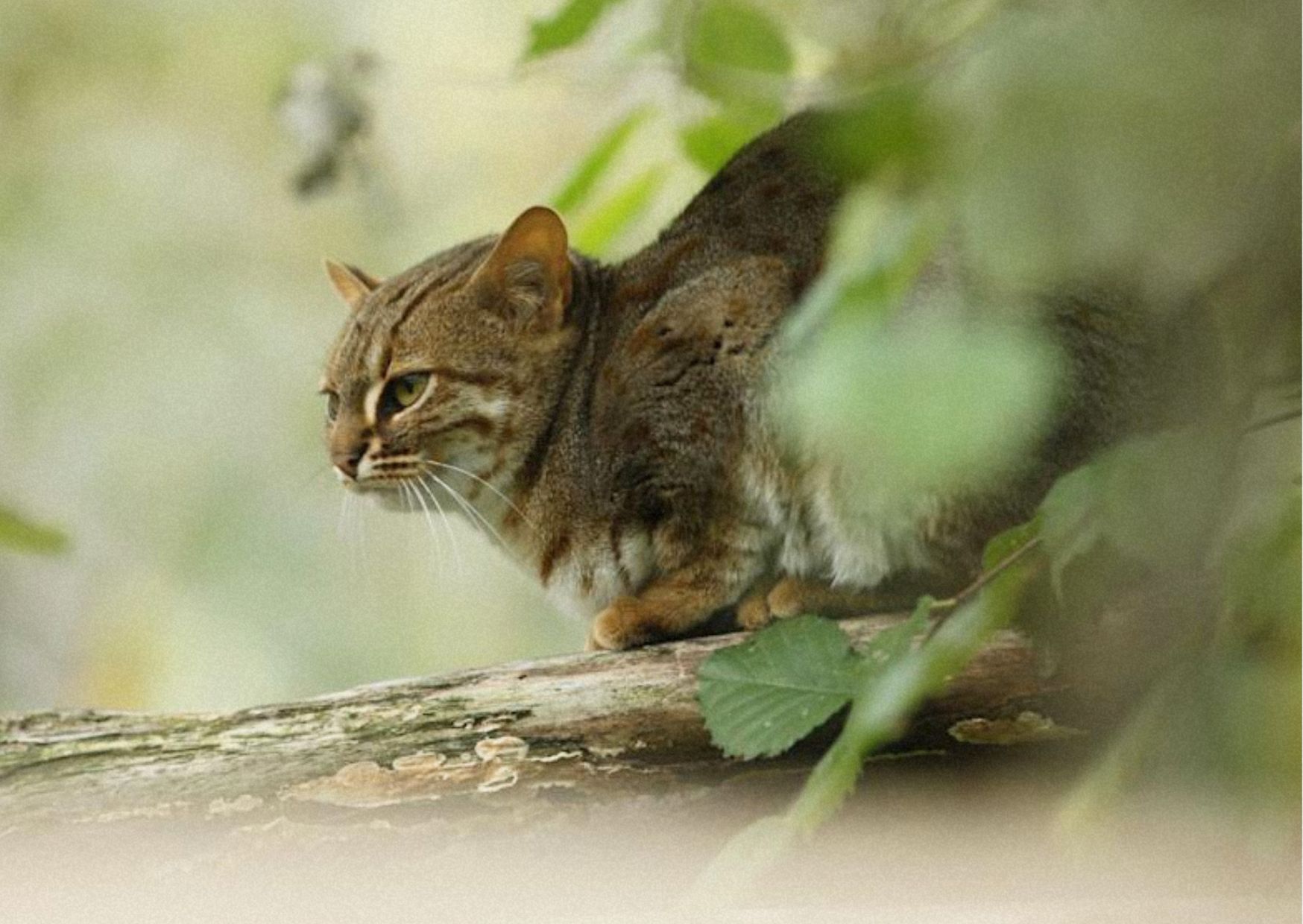
But recently, conservationists got lucky. A new sighting in Purulia, a district in West Bengal, signals something exciting: this delicate predator is thriving in new areas, proving that the region’s wildlife and ecosystems are in good shape.
Rusty-spotted cats are native to India, Nepal, and Sri Lanka, but encounters are incredibly rare. Their reddish-brown fur, speckled with dark spots, mimics a baby leopard’s coat, which unfortunately led to them being hunted in the past. Now, listed as “near-threatened” by conservation groups, every sighting is a big deal for wildlife experts.
“Such a rare and sensitive lesser cat will only survive in a forest where it gets a favourable ecosystem,” explains Anjan Guha, a forest officer in Purulia. Tigers, leopards, and now the rusty-spotted cat all thriving in the same area? That means the food chain is intact, and the forest is healthy.
Recent surveys back this up—India’s 2023 State Forest Report revealed that Purulia’s green cover has increased by four square kilometers (1.5 square miles). It’s a small but encouraging step toward reversing habitat loss.
Why This Tiny Cat Matters
Conserving species like the rusty-spotted cat isn’t just about protecting cute animals—it’s about keeping entire ecosystems in balance. According to the World Health Organization, healthy ecosystems:
- Provide clean air and water
- Stabilize the climate
- Prevent disease outbreaks
When nature thrives, so do humans. But if ecosystems collapse, food and water become scarce, and entire communities suffer.
While there’s still a long way to go, the rusty-spotted cat’s return to West Bengal is another victory in global conservation efforts. Around the world, success stories are proving that wildlife can bounce back when given a chance:
In the U.S., scientists cloned an endangered black-footed ferret, and in 2024, the clone successfully reproduced for the first time—a major step for conservation genetics.
In Orkney, Scotland, an invasive stoat population was completely eradicated, restoring the delicate balance of the local ecosystem.
And now, the rusty-spotted cat joins the list. With this new knowledge of its expanding range, conservationists can better protect it and its habitat.
“This new record is a significant contribution to the puzzle,” says Tiasa Adhya, a researcher with the IUCN Cat Specialist Group.
One thing’s for sure—big or small, every win for wildlife is a win for us all.
